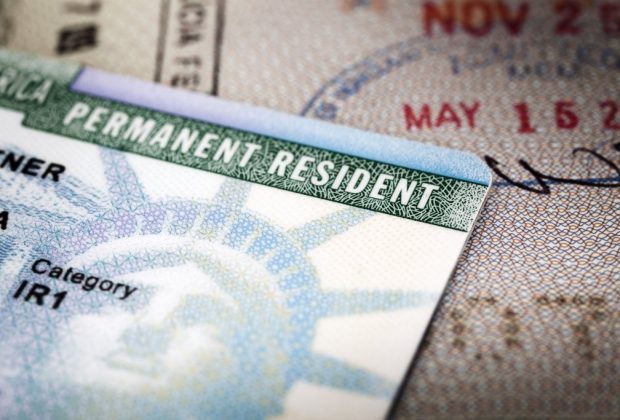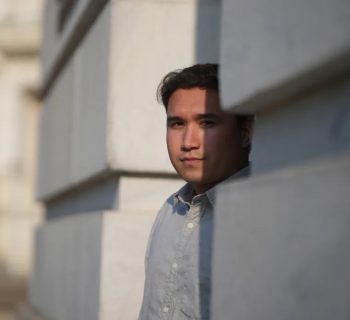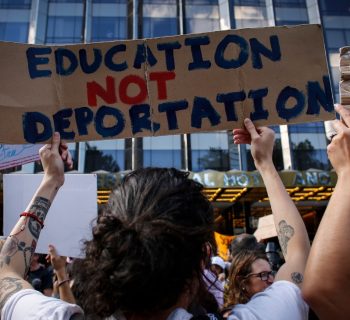The Biden administration’s glitchy new app is failing asylum seekers. Now, migrant’s rights groups are fighting back.
By Erica Hellerstein | CODA | AUG. 9, 2023
It has been more than half a century since U.S. immigration laws were written to enshrine the right to apply for asylum at any port of entry to the country. But a new lawsuit argues that today, the right to seek safe haven from persecution is only accessible to people who show up at America’s doorstep with a working smartphone in hand.
Since May, migrants on the Mexico side of the U.S.-Mexico border who are hoping to apply for asylum have been required to make their asylum appointments through a mobile phone app operated by U.S. Customs and Border Patrol, known as CBP One. The new system has effectively oriented the first — and for many, the most urgent — stage of the asylum process around a digital tool that is, by many accounts, glitchy and unreliable.
On July 27, immigrants’ rights groups filed a class action lawsuit against the Biden administration over its use of the app, setting the stage for a legal showdown over the government’s decision to shift the first stage of the asylum application process into the realm of automation.
The plaintiffs include 10 migrants who sought asylum along the border but were turned away by U.S. immigration officials because they hadn’t made appointments using CBP One. Their suit alleges that the U.S. government’s use of CBP One has created steep, and in some cases insurmountable, technological obstacles that have prevented migrants from pursuing their right to asylum. As a result, they’re often left with little choice but to remain in Mexican border towns, where violence and crime targeting migrants is notoriously high.
CBP One became the primary entry point into America’s asylum system after the Biden administration lifted Title 42, a Trump-era policy that barred most people from seeking asylum in the U.S. because of the Covid-19 pandemic. Now, in order to be eligible for protection, migrants must possess an up-to-date smartphone, internet access, mobile data and the ability to read and write in English, Spanish or Haitian Creole — the only three languages the app offers. These requirements, the lawsuit argues, disadvantage refugees who don’t have or can’t afford a smartphone and those who lack the requisite language skills. The suit also argues that the government has established new criteria for asylum applications that do not align with asylum laws that were vetted and approved long before the dawn of the smartphone. Imagine telling the authors of the modern asylum system, which was created after the Holocaust, that this guarantee is only accessible to people who arrive at the border with a miniature computer in their pocket.
And that’s nothing to say of the technology’s myriad flaws. As I reported in June, the app is notoriously unreliable, with facial recognition software that misidentifies darker skin tones and has a tendency to crash, freeze and log users out while they are trying to schedule their asylum appointments.
“If I could give negative stars I would,” a user seethed on CBP One’s App Store review page, where the app has just 2.6 stars. “My family are trying to flee violence in their country and this app and the photo section are all that’s standing in the way.”
Critics have been sounding the alarm about these problems since the Biden administration announced the policy. Amnesty International argued that the government’s use of the app violates international human rights law by placing unnecessary technical and practical barriers in the way of migrants seeking to exercise their legal right to apply for asylum.
Immigration attorney Nicole Ramos spoke with me about the technical and linguistic challenges that asylum seekers encounter when they attempt to schedule an appointment on the app. Ramos is the Border Rights Project director for the immigrant’s rights group Al Otro Lado, which provides legal support to asylum seekers on both sides of the US-Mexico border.
“There are days where the app is unable to be used due to system-wide glitches,” she said. “There are days and weeks where people keep getting an error message that says that they need to be closer to the border in order to make an appointment and they are literally standing at the port of entry.”
Asylum seekers who don’t speak or read in English, Spanish or Haitian Creole are left to try to make sense of the error messages and the app’s directions on their own. The government does not provide translation support to people who do not speak a language supported by CBP One.
“The government is putting all the onus for language access on the asylum seeker themselves and already overburdened nonprofit organizations,” Ramos said. She explained that Al Otro Lado hires interpreters to help applicants who don’t speak any of the languages that the app offers but noted that this responsibility should fall on the government, not organizations like hers. “They are externalizing their responsibility to afford language access to individuals trying to access our legal system.”
The government’s policy grants exceptions for asylum seekers with “exceptionally compelling circumstances,” like acute medical emergencies or risk of death, and says that those individuals should be permitted to ask for border officials for asylum without a CBP One appointment. But in practice, the plaintiffs say, the app has effectively become the only pathway to access asylum, even for people who are eligible for the government’s exceptions. Ramos said Al Otro Lado has seen border officials turn away asylum seekers without appointments who were in the middle of medical emergencies, including a man in the middle of an epileptic seizure at the port of entry. “The Red Cross was called, police were there and they were aware of the situation and they still refused to process him,” she said. Ramos also shared the story of an asylum seeker who was killed in Mexico while waiting for a CBP One appointment. When the victim’s surviving family members approached border officials with the person’s death certificate in hand and asked to apply for asylum without using the app, they were instructed to schedule an appointment on CBP One.
The lawsuit alleges that border officials are “almost uniformly requiring asylum seekers to have a CBP One appointment in order to be inspected and processed, regardless of whether they may be eligible for an exception.” It describes two separate instances in which immigration officials rejected asylum seekers’ requests for special consideration after they were kidnapped by criminal groups in Mexico and missed their scheduled appointments. One of the victims escaped but left behind all of his valuables, including his cell phone, according to the lawsuit. When he appeared at the port and asked for asylum, border officials “emphasized that he needed to sign up through the app and denied him any opportunity to explain the exigencies of his situation.”







